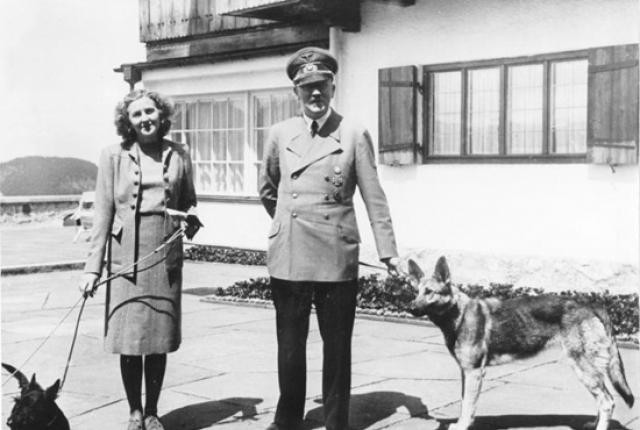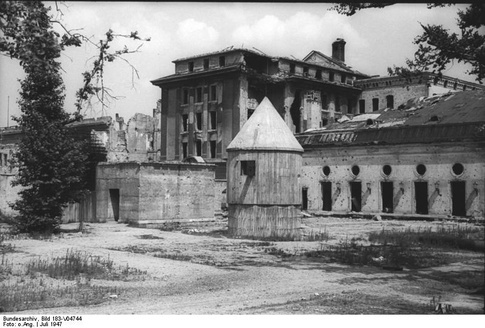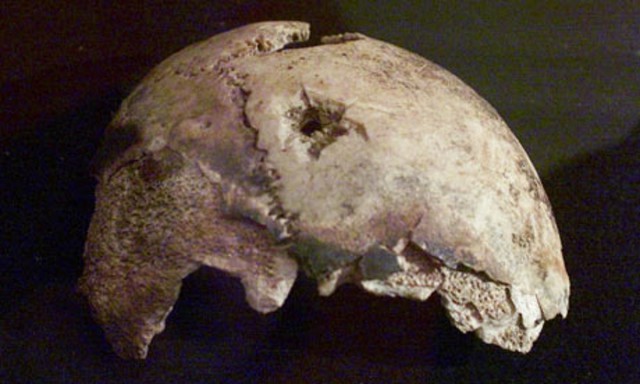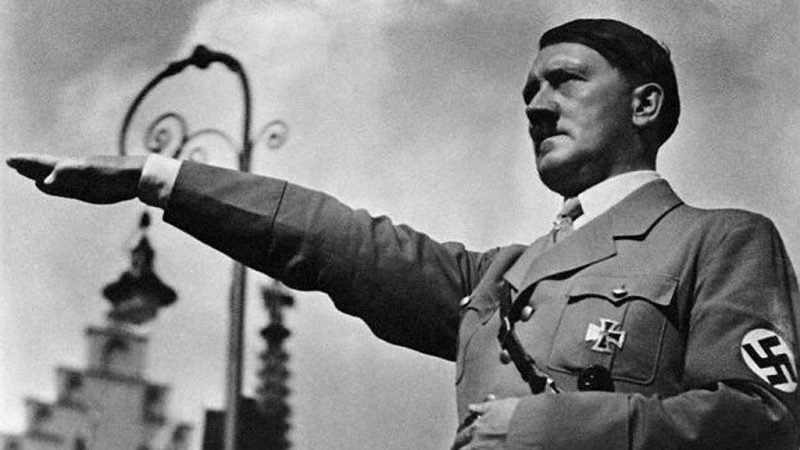April 30, 1945 – the Soviet Army moves quickly through the city of Berlin, the capital of Germany and the home base of the Third Reich. Beyond the city’s limits are the Allied forces, sweeping through the rest of the country, waging and winning battles as the Nazi army is brought to its knees.
Adolf Hitler still rules Germany, still holds the title of Fuhrer over the Third Reich, but this day will be his last. By this date, the Nazi regime was collapsing, and its leader would not see the month of May – or the end of World War II.
On April 30, 1945, Adolf Hitler died by his own hand. As his armies attempted to stave off a two-sided attack from the Allied and Soviet forces, Hitler hid inside a secret, fortified bunker in Berlin. He knew that he could not win the war; that his power and reign were rapidly coming to an end.
Just two days earlier on April 28, Hitler’s Italian ally Benito Mussolini was executed by partisans, hung in the center of Milan from a meat hook, and left for the Italian people to defile his dead body. Hitler knew that, should he survive the end of the war, the Soviets would do the same to him once captured.
So, Hitler devised a plan that he hoped would provide an escape from humiliation at the hands of his enemies: he would end his life, and make his corpse disappear. As the Soviets stormed Berlin on April 30, Hitler gathered his closest allies and friends inside his bunker. He married his longtime girlfriend, Eva Braun, in a brief and simple civil ceremony, then spoke with his secretary to finalize his will.
At approximately 2:30 p.m. Hitler and Braun entered their private chambers within the bunker; about an hour later, at 3:30 p.m., the sound of a gunshot echoed through the bunker. Adolf Hitler and Eva Braun were dead – Braun due to a self-ingested cyanide pill, Hitler via a cyanide pill and self-inflicted gunshot to the head.

Today, this story is not an unfamiliar one. The world knows exactly how Hitler died, how he brought himself to demise just as his regime was collapsing. Yet there is one mystery that still surrounded this infamous dictator’s death – where is his body? What happened after Hitler died, and why is there still no record of his remains?
With no marked grave, no specific site of burial, the location of Hitler’s body has confused and confounded many in the decades since his demise. Countless conspiracy theories have popped up in countries around the world since 1945, and the recent advent of forensic technology in the years since Hitler’s death have all complicated this incredible mystery.
What happened in the hours, days, and even years after Hitler committed suicide may not be as much of a mystery anymore, though, thanks to information revealed by former members of the Soviet Army.
According to members of the Nazi Party who were inside Hitler’s bunker when he died, who revealed their information during post-World War II trials, Martin Bormann and another aide were given instructions by their Fuhrer before his death. Once certain Hitler and Braun were dead, Bormann and the aide wrapped the bodies in blankets, carried them outside of the bunker, and laid them down about six feet from its entrance.
The duo then poured 200 liters of benzine, over both corpses and lit them on fire. This was done in an effort to throw the Soviets off track, to prevent them from discovering Hitler’s body and defiling it. The plan worked – when the Soviet army arrived at the Fuhrerbunker on May 4, 1945, they noticed the burned bodies. They did not, however, consider that one of them might be Hitler’s body, and they casually buried the remains in a bomb crater on the bunker property. The Soviets conducted a search of the bunker but found no traces of Hitler.

However Hitler’s plan wasn’t flawless. When the Soviets realized Hitler wasn’t inside his bunker, they recalled the burned bodies they’d encountered upon their arrival – could those be Hitler’s remains? The men quickly dug up the bodies they’d buried just a day prior, and brought them to the Soviet headquarters in Berlin for an autopsy.
On May 11, a dentist confirmed that the bodies were, in fact, those of Adolf Hitler and Eva Braun. The Soviets kept their information secret from the Allied forces and nations for some time; Germany did not even declare Hitler dead until over a decade later, in 1956.
Once the Soviets were confident that they held Hitler’s remains, they went to great and secretive lengths to ensure it never fell into the hands of another army, nation, or people. As a result, Hitler’s body did not stay in a single resting place for long – over the course of the following years, his remains changed locations three times.
It began in June 1945 when Soviet secret operatives in the organization SMERSH took Hitler’s corpse to a forest near Rathenau, a German town. They buried it there but dug it up just eight months later. Hitler’s remains then traveled to Magdeburg, where the Soviet Army was stationed, and were reburied there alongside those of Nazi propagandist Joseph Goebbels, the Goebbels family members, and Eva Braun. There, Hitler’s body remained for 25 years.
In 1970, the Kremlin ordered the Soviet outpost at Magdeburg closed and the land returned to the East German government. However, the Soviets didn’t want to turn over the land with Hitler still buried within it; they worried that, if discovered, neo-Nazis and others might turn the site into a shrine. It was time for the Soviets to make Hitler’s body disappear once more – this time, it would be for good.
Yuri Andropov, head of the KGB, ordered agents to get rid of Hitler’s remains and ensure they would never be found. Under Andropov’s orders, KGB officer Vladimir Gumenyuk chose a secret spot in which to place Hitler’s body for eternity.
Gumenyuk and three other KGB men pitched a tent over the burial site, disinterred Hitler’s remains, and carried them into the nearby mountains while disguised as fishermen. Upon arriving at a stream, the men lit a fire, tossed Hitler’s already burned remains upon it and burned all that was left once more.
Now, all that was left of the once ominous and powerful dictator was a pile of sooty ashes. Gumenyuk and his team scooped the ashes into a bag, walked to the edge of a cliff overlooking the stream, and let great gusts of wind carry Hitler’s remains away to places unknown.

Somewhere along the way, though, the Soviets kept what they believed to be a few pieces of Hitler’s body. These remains were brought back to the USSR, hidden in a cardboard box, and untouched until 1993, which the Russian state archives announced that they had found pieces of Hitler’s skull.
Though Russian officials still claim to this day that the skull fragments are all that remains of Hitler’s body, many countries disagree – both French and United States forensic experts tested these remnants and argued that they belong to a young woman.
The grave in which Adolf Hitler’s body was placed has long been sought after by historians, by scientists, and by conspiracy theorists. Yet the man who truly knows what happened is Gumenyuk, the only surviving member of that Soviet KGB team who carried the horrific Hitler’s remains to their final resting place: scattered throughout a forest, placed by the wind alone.
There is no way to know exactly where Hitler’s ashes lay today, or if they even exist at all after the many decades that have passed.
Sources: 1
